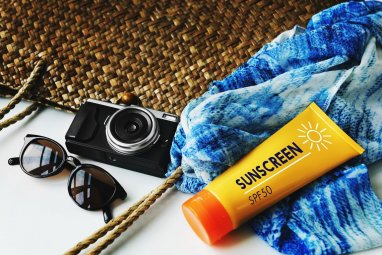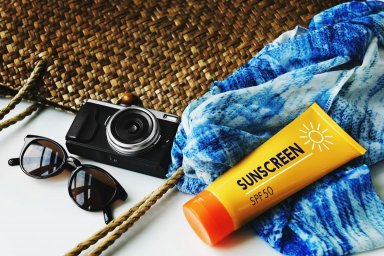The summer sun gives us warmth and a good mood, but its rays can be dangerous for the skin. Exposure to UV radiation can damage the DNA of cells, provoke premature aging (photoaging), the appearance of pigment spots and even the development of melanoma.
Which sun rays are dangerous for the skin?
Sunlight includes waves of different lengths: visible light (400–760 nm), ultraviolet (290–400 nm) and infrared (760 nm – 1 mm) radiation. The most dangerous for the skin are ultraviolet rays:
UVB rays (short-wave radiation): affect the top layer of skin (epidermis), causing sunburn and tanning. UVA rays (long-wave radiation): penetrate into the deeper layers of the skin, damaging the DNA of cells, destroying collagen and elastin, which leads to accelerated aging and increases the risk of skin cancer.
What is SPF and how does it work?
Sun protection factor (SPF) indicates the ability of a product to block UVB rays.
For example, if without sunscreen your skin starts to burn after 10 minutes of sun exposure, then using a product with SPF 30 will increase this time by 30 times, i.e. up to 300 minutes (30 x 10). This means that you can be in the sun for 5 hours before redness appears.
The higher the SPF value, the more effective the product is in protecting against UVB rays. However, it is worth considering that the difference in protection level between adjacent SPF values is non-linear and decreases with each step:
SPF 10 blocks about 90% of UVB rays.
SPF 15 provides about 93% protection.
SPF 30 filters out about 97% of UVB rays.
SPF 50 blocks about 98% of UVB rays.
SPF 100 provides about 99% protection.
It is important to understand that the effectiveness of sunscreen in practice depends on the amount of product applied, the uniformity of its distribution and timely renewal. Research shows that most people do not apply enough cream, which reduces the level of protection even with a high SPF.
Rules for using sunscreens
Choose your product carefully. For everyday use in the city or for short walks, a cream with SPF 30 is suitable. For a beach holiday or a stay in the mountains, it is recommended to use products with SPF 50 or higher.
Apply the product in advance. It is best to apply sunscreen 15-20 minutes before going outside. During this time, it will have time to be absorbed and begin to effectively protect the skin.
Don't skimp on the amount. For an adult, you need to use at least 30 ml of cream per application - that's about six teaspoons. Make sure the cream is evenly distributed over all exposed areas of skin.
Renew protection regularly. Reapply sunscreen every two hours and after swimming or sweating heavily.
Use a comprehensive approach. No sunscreen provides 100% protection from the sun's rays. Therefore, try to avoid exposure to the sun during peak hours of solar activity (from 10:00 to 16:00), stay in the shade whenever possible, and wear protective clothing.
It should be remembered that ultraviolet radiation is active even in cloudy weather and can penetrate through window glass. In winter, especially in mountainous areas, the intensity of UV rays increases due to their reflection from the snow surface. Therefore, skin protection is necessary at any time of year.
Resource: doctor.rambler.ru













